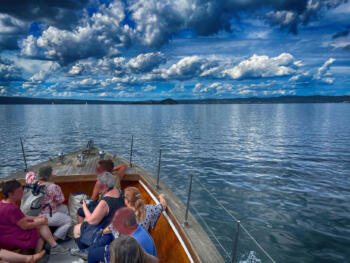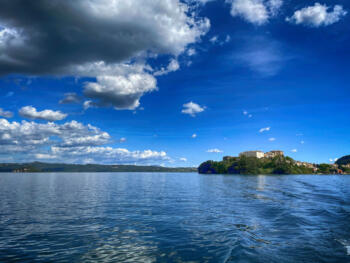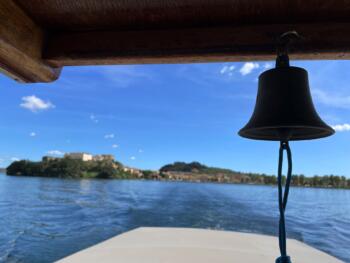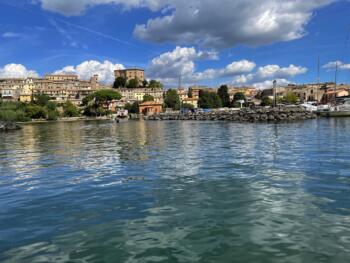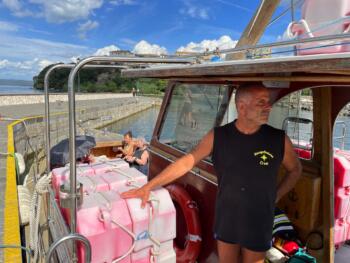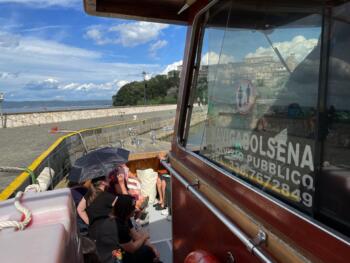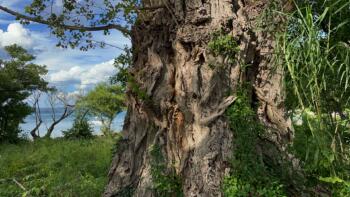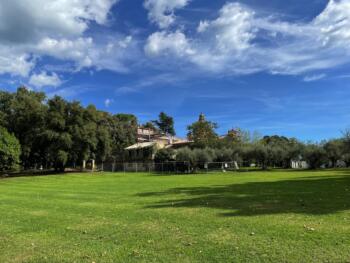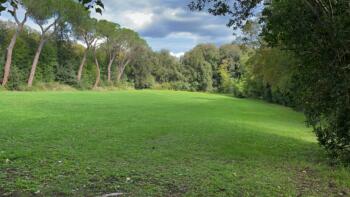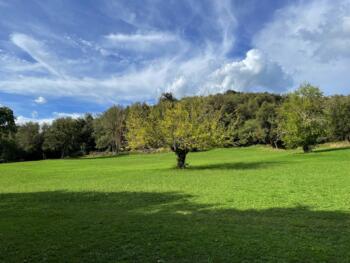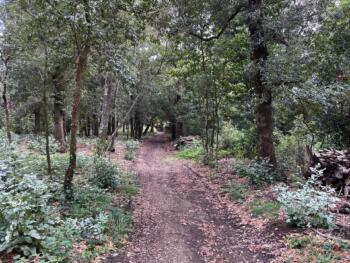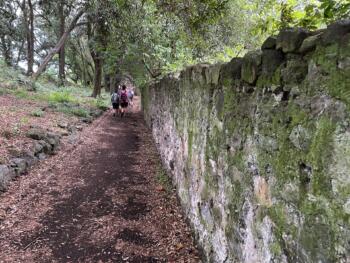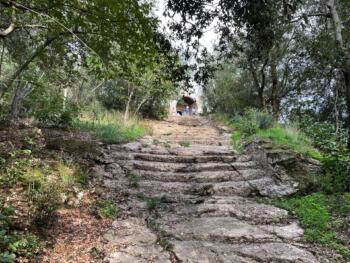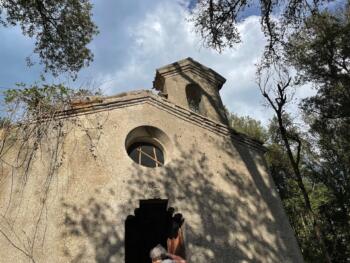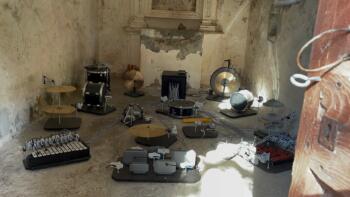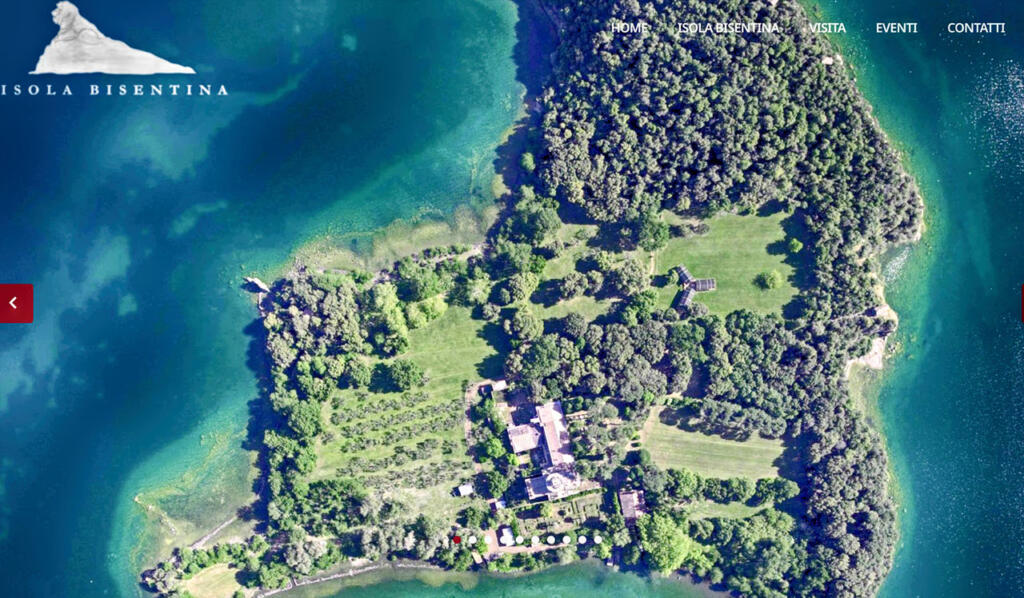 Andate sull’applicazione Google Earth e digitate l’indirizzo della vostra abitazione.
Andate sull’applicazione Google Earth e digitate l’indirizzo della vostra abitazione.
Mettetevi comodi perché si parte per un viaggio indimenticabile.
Sulla lente d’ingrandimento digitate: Isola Bisentina, lago di Bolsena. Sarete proiettati nel cielo per poi atterrare su di una isola al centro del Lago di Bolsena che e’ al centro dell’Italia. Isola con un profilo attraente e sinuoso, circondata da acque smeraldine.
La sensazione e’ di essere al centro del mondo, isolati da tutti , in una pace assoluta.
Questo è quello che abbiamo provato mettendo piede sull’Isola.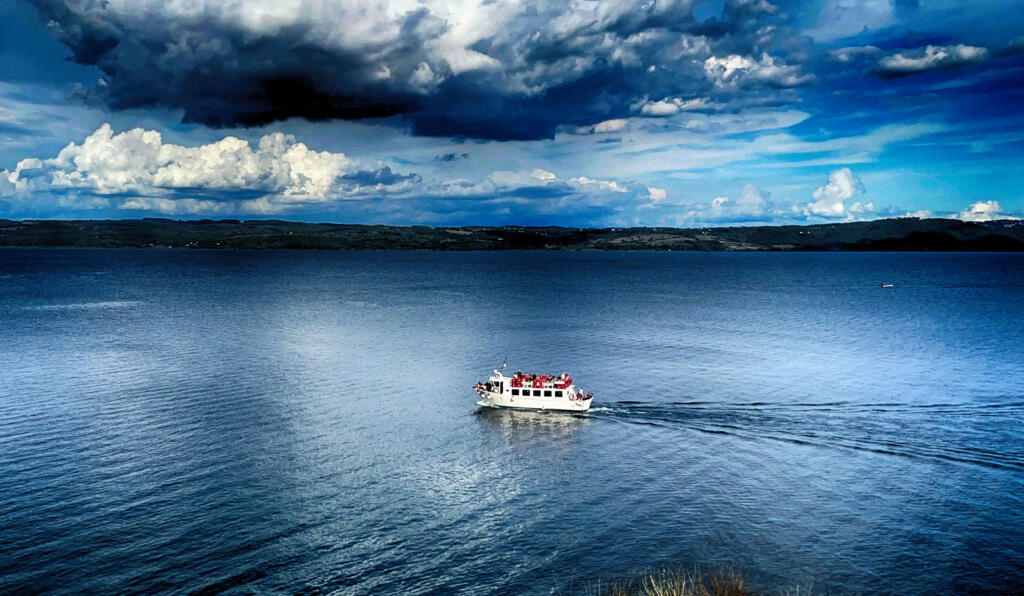
Il lago di Bolsena o Volsinio si trova in Italia centrale, nell’alto Lazio, nella parte settentrionale della provincia di Viterbo.
Si parte dal molo di Capodimonte, da dove svetta la Rocca del Sangallo, ed in quindici minuti di battello si approda vicino l’elegante darsena in stile liberty.
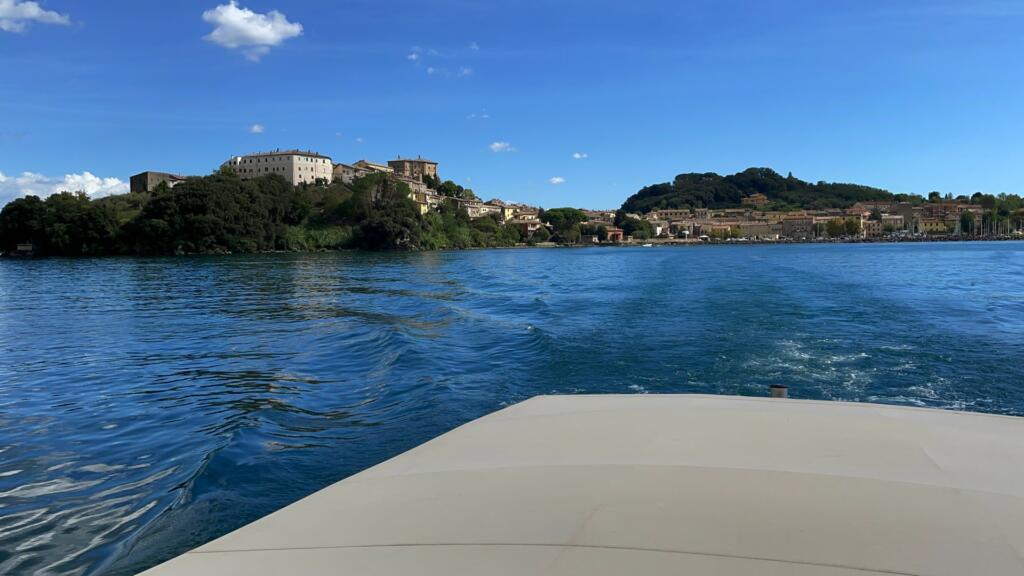 L’Isola Bisentina è un luogo da sogno che purtroppo per molti anni non è stato possibile visitare. Un gioiello di appena diciassette ettari, al centro del Lago di Bolsena, conosciuto per essere il più grande bacino di origine vulcanica dell’intero continente europeo.
L’Isola Bisentina è un luogo da sogno che purtroppo per molti anni non è stato possibile visitare. Un gioiello di appena diciassette ettari, al centro del Lago di Bolsena, conosciuto per essere il più grande bacino di origine vulcanica dell’intero continente europeo.
L’Isola è un isolotto privato che adesso si può finalmente visitare, grazie ai battelli che partiranno da Capodimonte e da Bolsena.
Sono più di vent’anni che non scendo su questa isola affascinante.
I ricordi non possono non andare a mia Nonna Delia , viterbese doc, o meglio, “etrusca” , come amava definirsi. D’estate, partendo da Capodimonte, portava noi nipoti sull’isola ad ascoltare la musica che veniva suonata nelle piccole cappelle, alla luce delle fiaccole.
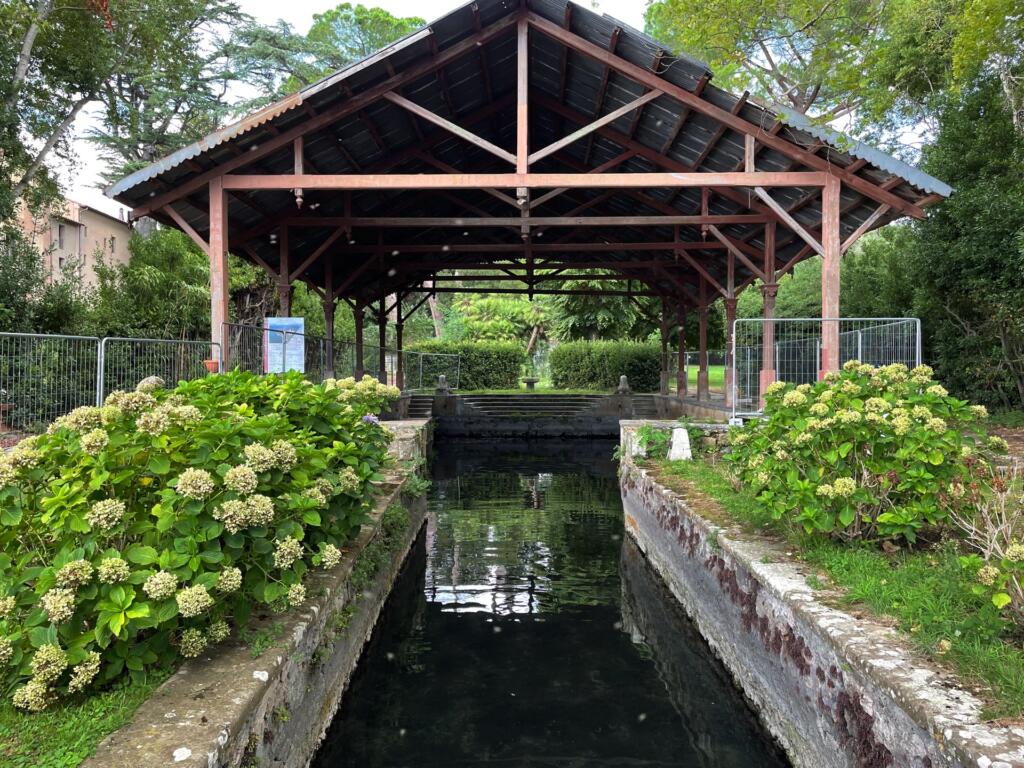 Ovviamente noi bambini avevamo altri progetti: correre per i vialetti ed i boschetti. Rincorrere gli animali che la popolavano: gatti, cani, conigli forse cerbiatti. Ma era vietatissimo avvicinarci all’acqua: potevamo essere “mangiati dai serpenti del lago “. Astutamente, mesi prima, ci avevano fatto vedere una cesta con anguille vive e quella vista era bastato a convincerci.
Ovviamente noi bambini avevamo altri progetti: correre per i vialetti ed i boschetti. Rincorrere gli animali che la popolavano: gatti, cani, conigli forse cerbiatti. Ma era vietatissimo avvicinarci all’acqua: potevamo essere “mangiati dai serpenti del lago “. Astutamente, mesi prima, ci avevano fatto vedere una cesta con anguille vive e quella vista era bastato a convincerci.
Come anche, al ritorno a Capodimonte, dovevamo fare i bravi in barca, altrimenti l’enorme leone di pietra si sarebbe arrabbiato.
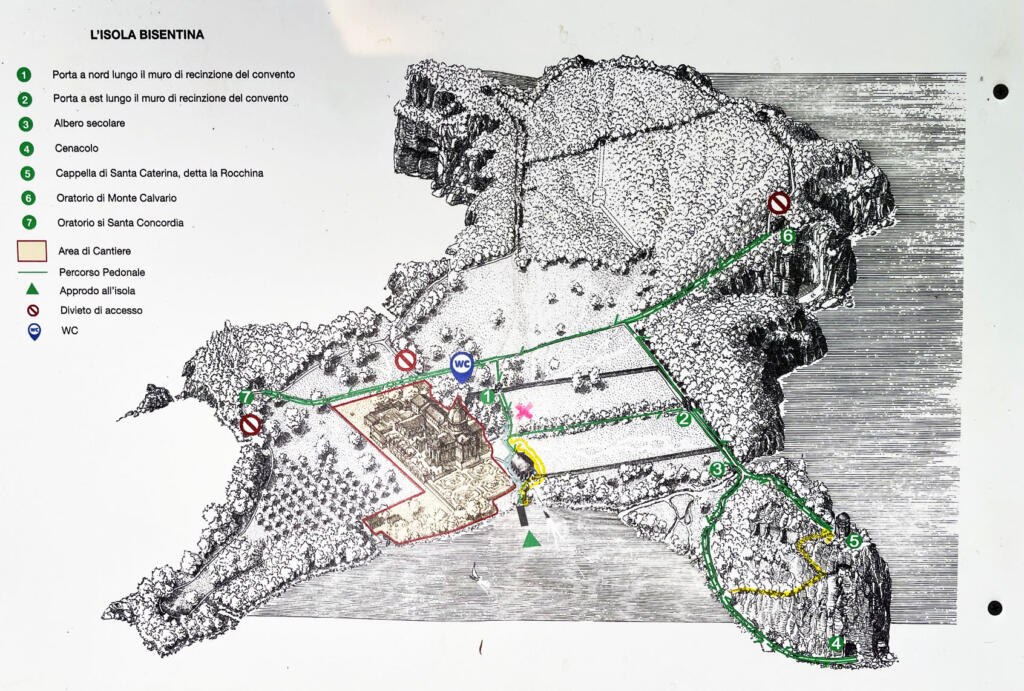 La famiglia Del Drago, nobile e storica casata originaria di Viterbo, è proprietaria dell’isola fin dal 1800. Il principe Giovanni del Drago e sua sorella, la principessa Maria Angelica del Drago, in passato spesso soggiornavano sull’isola ma negli ultimi quindici anni si è andato incontro ad un progressivo degrado degli edifici presenti. Nel 2017 nipoti della principessa Maria Angelica del Drago hanno ceduto il gioiello naturalistico alla Fondazione Luigi Rovati, fondazione intitolata a Luigi Rovati, medico lombardo, ricercatore e imprenditore farmaceutico, da sempre impegnato in ambito culturale.
La famiglia Del Drago, nobile e storica casata originaria di Viterbo, è proprietaria dell’isola fin dal 1800. Il principe Giovanni del Drago e sua sorella, la principessa Maria Angelica del Drago, in passato spesso soggiornavano sull’isola ma negli ultimi quindici anni si è andato incontro ad un progressivo degrado degli edifici presenti. Nel 2017 nipoti della principessa Maria Angelica del Drago hanno ceduto il gioiello naturalistico alla Fondazione Luigi Rovati, fondazione intitolata a Luigi Rovati, medico lombardo, ricercatore e imprenditore farmaceutico, da sempre impegnato in ambito culturale.
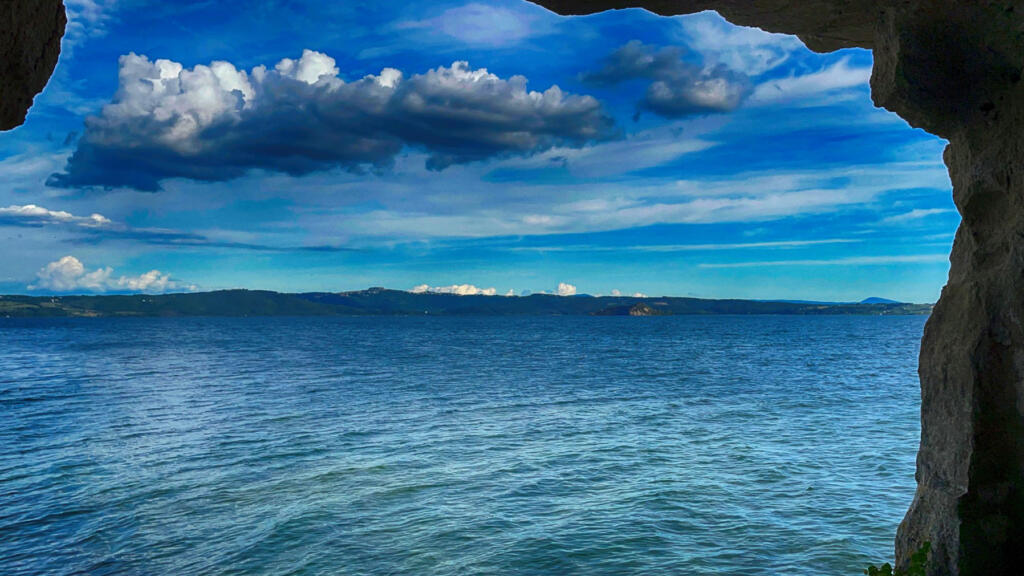
Alle iniziali voci sulle trattative per l’acquisto, seguirono iniziative da parte dei comuni del lago di Bolsena volte a sondare un eventuale interesse pubblico all’acquisto con il Ministero dei beni culturali e la Regione Lazio, che però non hanno avuto esito positivo.
Numerosi monumenti sono presenti sull’Isola, tra cui la chiesa dei Santi Giacomo e Cristoforo attribuita alla scuola del Vignola, caratterizzata dalla maestosa cupola: scrigno di tesori (come le tele di Annibale Caracci oggi in Vaticano) e l’attiguo convento Francescano oggi in restauro. La chiesa fu voluta nel 1588 dal cardinale Alessandro Farnese e venne costruita su edifici preesistenti, su progetto dell’architetto Giovanni Antonio Garzoni da Viggiù, che disegnò anche la cupola in piombo. Una sorta di “faro” ben visibile dalla terraferma che rende inconfondibile lo skyline della Bisentina.
La cappella di Santa Caterina, detta della “Rocchina”, ottagonale, viene attribuita ad Antonio da Sangallo il Giovane: costruita su un colombario etrusco, che si erge da uno sperone di roccia a picco sul lago. Deve il suo soprannome al fatto di essere, in pratica, una miniatura della Rocca di Capodimonte .
E ancora la cappella del Crocifisso o del Monte Calvario, che conserva preziosi affreschi attribuiti alla mano di Benozzo Gozzoli,
per ultimo l’orribile Malta dei Papi, carcere a vita per ecclesiastici colpevoli d’eresia, composto da una misera e buia cella all’interno di una collina, con luce filtrante da una piccola botola posta a 20m d’altezza.
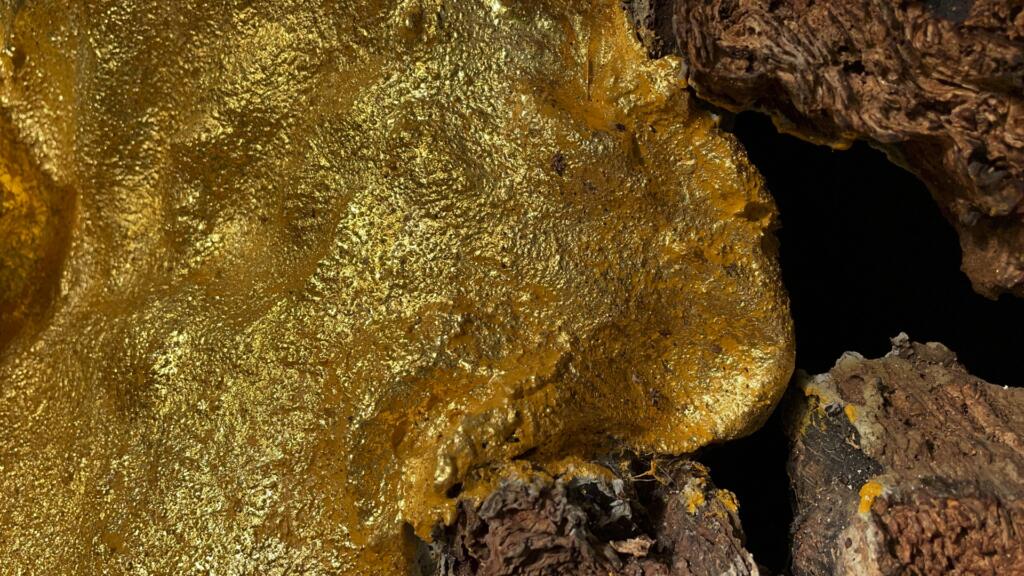 Gli etruschi e i romani hanno lasciato solo poche tracce della loro permanenza sull’isola. Fu certamente abitata nel IX secolo quando le popolazioni rivierasche vi si rifugiarono per sfuggire alle incursioni saracene.
Gli etruschi e i romani hanno lasciato solo poche tracce della loro permanenza sull’isola. Fu certamente abitata nel IX secolo quando le popolazioni rivierasche vi si rifugiarono per sfuggire alle incursioni saracene.
A metà del 1200 divenne proprietà dei signori di Bisenzio i quali, in seguito a controversie con gli isolani, l’incendiarono abbandonandola.
Nel 1261, Papa Urbano IV riconquistò l’isola, nel 1333 fu nuovamente distrutta da Ludovico il Bavaro che era stato accusato d’eresia e scomunicato dal Papa. Proprietà dei Farnese dal 1400 conobbe un periodo di gran prosperità e fu visitata da numerosi Papi.
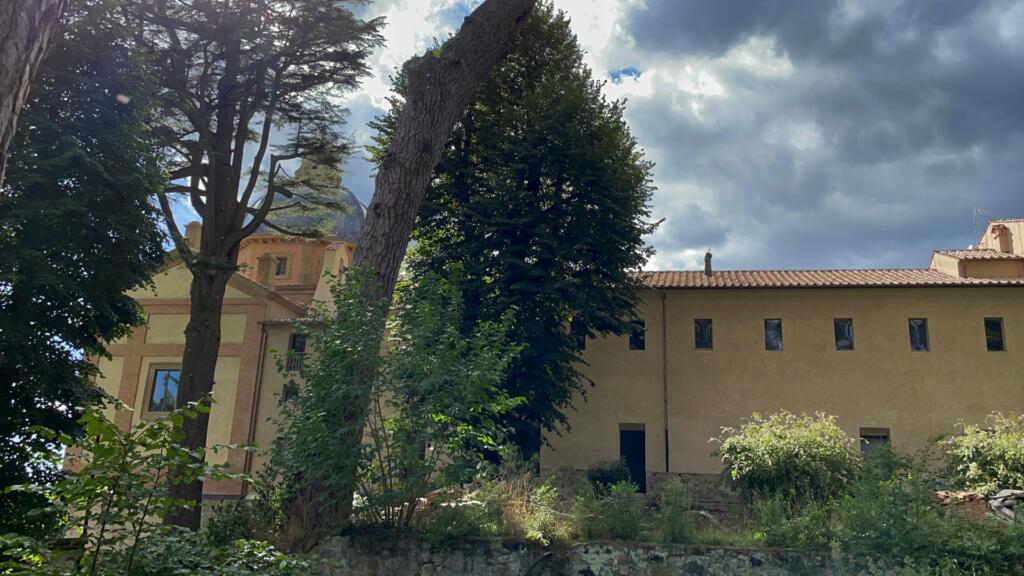 I Farnese affidarono l’isola ai frati minori che vi costruirono un orto, sette cappelle e un “Cenacolo” a strapiombo sul lago per la meditazione, uno dei punti più suggestivi del percorso.
I Farnese affidarono l’isola ai frati minori che vi costruirono un orto, sette cappelle e un “Cenacolo” a strapiombo sul lago per la meditazione, uno dei punti più suggestivi del percorso.
Nel 1635 venne governata dal duca di Castro, Odoardo Farnese, il quale entrò in conflitto con la Chiesa terminando con la completa distruzione di Castro.
In seguito a questo triste evento, l’isola Bisentina, come la Martana, tornò alla chiesa e poi ceduta.
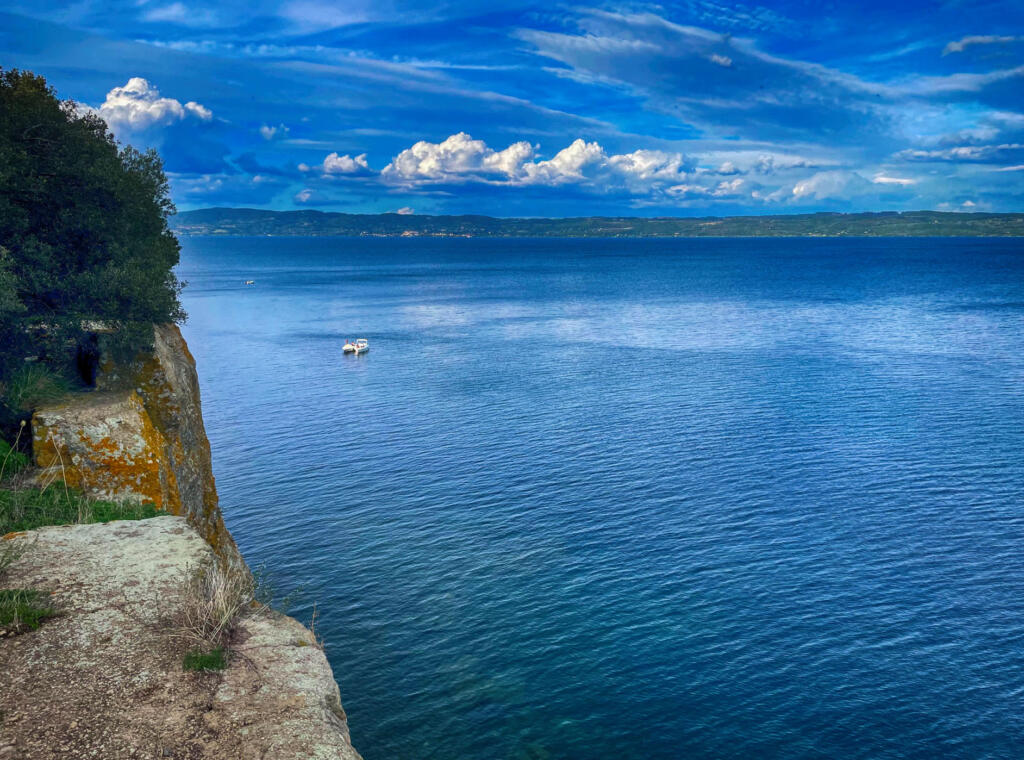 Il Monte Tabor è il suo punto più alto: nel Paradiso Dante immagina qui il carcere perpetuo dei Papi.
Il Monte Tabor è il suo punto più alto: nel Paradiso Dante immagina qui il carcere perpetuo dei Papi.
L’isola Bisentina è da sempre considerato un luogo quasi magico ed avvolto da leggende. Secondo uno dei tanti racconti, l’isola Bisentina sarebbe il passaggio italiano per il regno di “Agarthi”, dal sanscrito “l’inaccessibile”. Agarthi (o Agartha) è un regno leggendario, collocato al centro del pianeta e derivato dalla teoria della “terra cava”, popolato da una civiltà evoluta, pacifica, moralmente retta, forse già a contatto con entità aliene che avrebbe aiutato l’umanità in caso di pericolo e che ha disseminato varchi e luoghi di passaggio in tutto il mondo. Per esempio, in Egitto, all’interno della Sfinge vi è un tunnel inesplorato che pare condurre ad Agarthi, e così anche nella foresta Amazzonica.
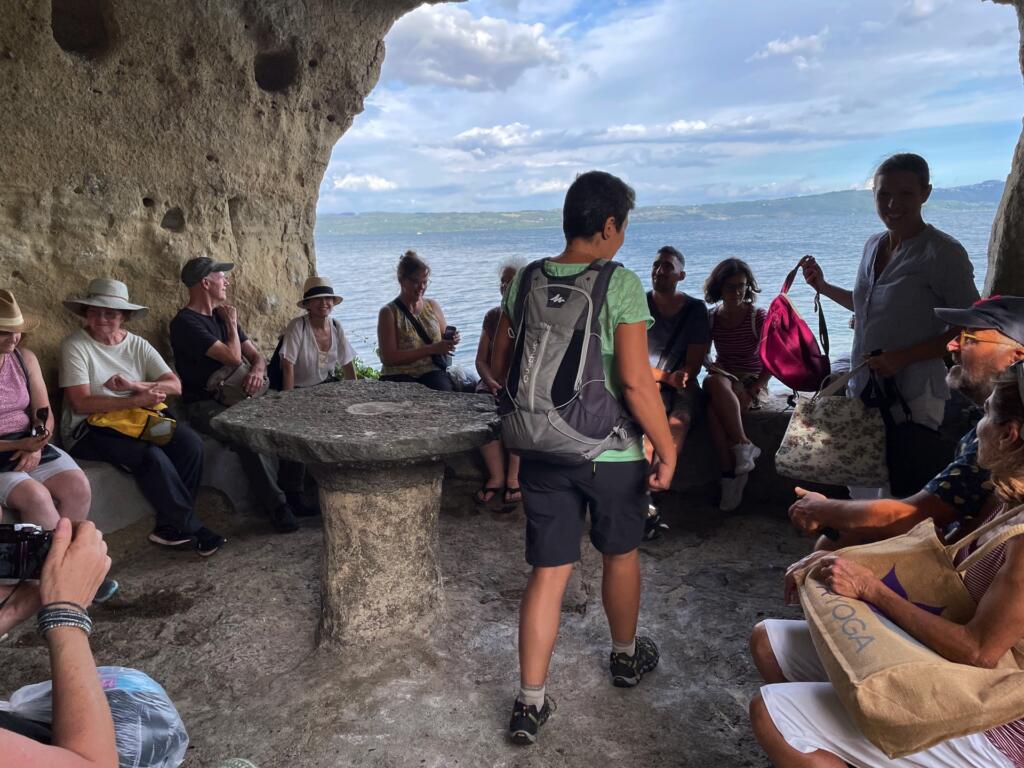 Di molto più reale c’è un percorso quasi spirituale che comprende anche un habitat naturalistico unico, fatto di alberi secolari e flora autoctona. Vi convivono piante esotiche rare, querce native e ontani, piante di importazione seicentesca, come platani, tigli, eucalipti, magnolie, cedri e palme, oltre a specie rupicole e felci sulle pareti rocciose. Tante le piante mediterranee come il leccio e l’ulivo selvatico, insieme ad agavi e fichi d’India.
Di molto più reale c’è un percorso quasi spirituale che comprende anche un habitat naturalistico unico, fatto di alberi secolari e flora autoctona. Vi convivono piante esotiche rare, querce native e ontani, piante di importazione seicentesca, come platani, tigli, eucalipti, magnolie, cedri e palme, oltre a specie rupicole e felci sulle pareti rocciose. Tante le piante mediterranee come il leccio e l’ulivo selvatico, insieme ad agavi e fichi d’India.

Amante dell’arte, della cucina e della buona vita.

